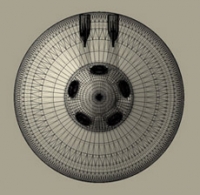NANODRIZAS.ORG
Project by
Arcangel Constantini
MEXICO.
Nanodrizas proposes an example of an emerging mode of environmentally engaged media art practice, which we might designate 'tactical eco-tech'. Nanodrizas addresses immediate local environmental concerns utilizing multiple wireless networked devices, in this case floating devices which collect and send data about water pollution, and respond to the conditions with both chemical interventions and acoustic expressions. The Nanodrizas are autonomous floating devices which monitor pollutants in real time, generate sound, send data to centralized data interpretation and visualisation systems via wireless communications and also disperse bacterial and enzyme remedies in situ. The work thus moves beyond other environmental tactical media interventions by making an attempt to be actively therapeutic. The work will also functions to alert and sensitise people to the situations via, in the first location, the sound emissions of the Nanodrizas and second via displays in exhibition centers and online.
The artist identifies two specific locations for engagement : La Constancia in Puebla, the first textile factory in Latino America, and its adjacent waterway, from which it derived power, and into which it no doubt dispersed waste; and Lago de Chapultepec, an artificial lake in Mexico City, built by Porfirio Diaz. In both cases, the artist engages specific and general histories related to the locations.
Technically the Nanodrizas exploit contemporary paradigms of flocking robotics, 'motes', adhoc networks and realtime data sonification and visualization. In its goal to build a 'symbiotic network of mutual benefit', it harks back to the rhetoric of cybernetics, combined with the (cybernetically informed) sensibilities of environmentally-activist site-specific artwork of the 60s and 70s by Newton Harrison and Helen Mayer Harrison and others.
The project thus exemplifies an admirably holisitic kind of art practice which is simultaneously technologically well informed and technologically inventive, while being engaged with complex social histories and activist with respect to fundamental problems of our time.
TELEFONICA FOUNDATION, SPAIN. 2009
